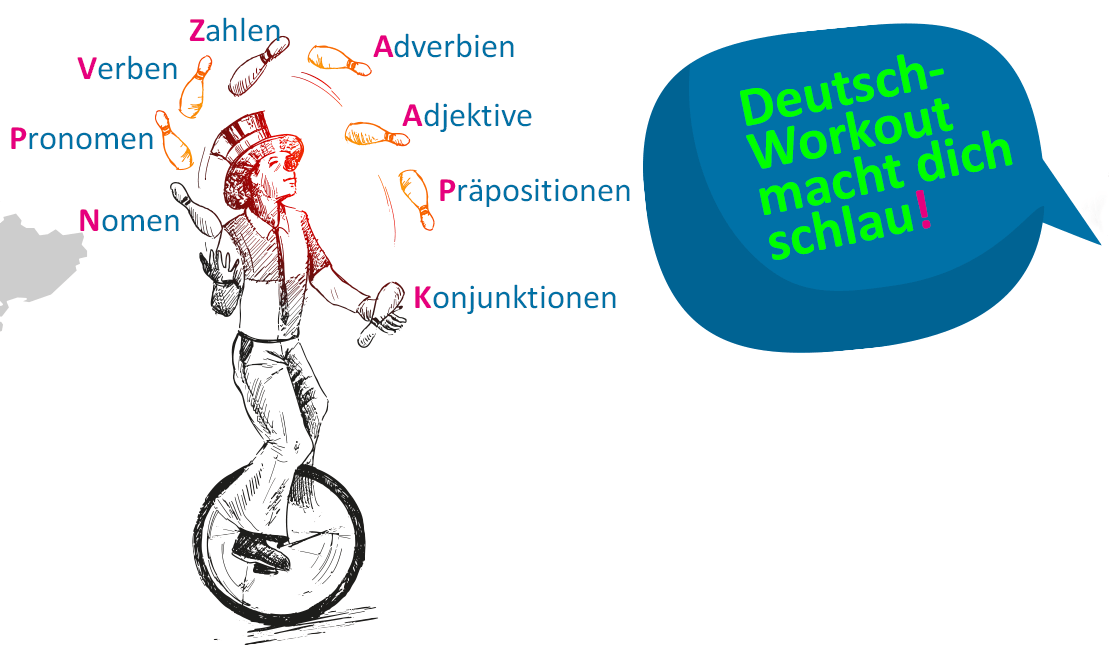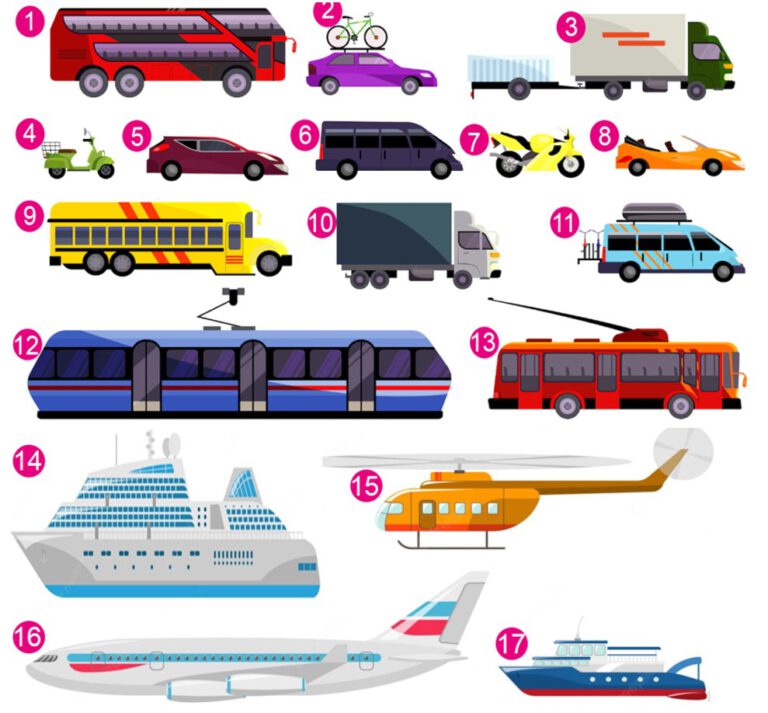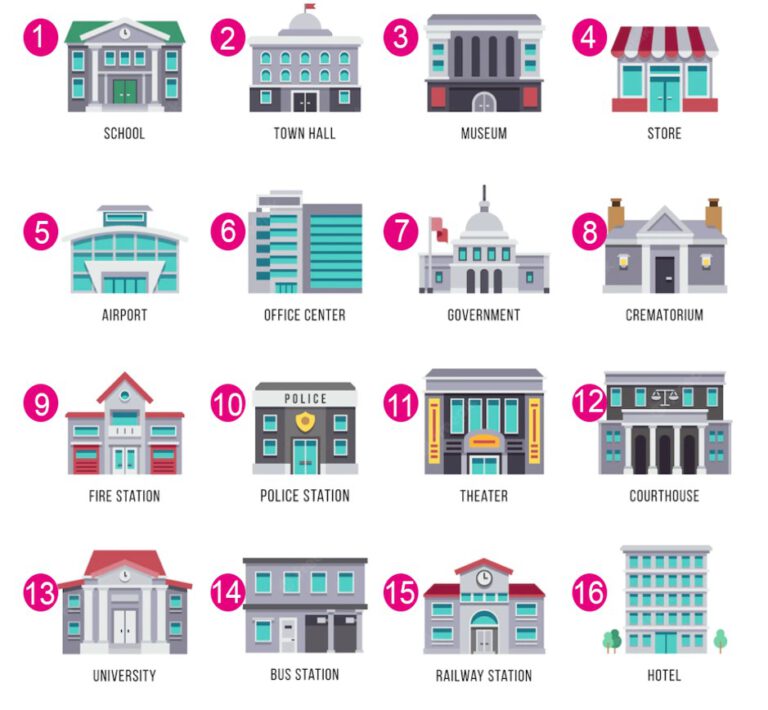Prepositions are connecting words that refer to a direction, a place or a time.
They themselves have no endings or changes to positions in the sentence and always come before nouns. Nouns are in turn influenced by genus (accusative, dative, later genitive from A2 language level).
Three groups of prepositions appear at A1 level: Prepositions with accusative, prepositions with dative and alternating prepositions (you alternate between accusative and dative because of direction or place).
Prepositions with accusative
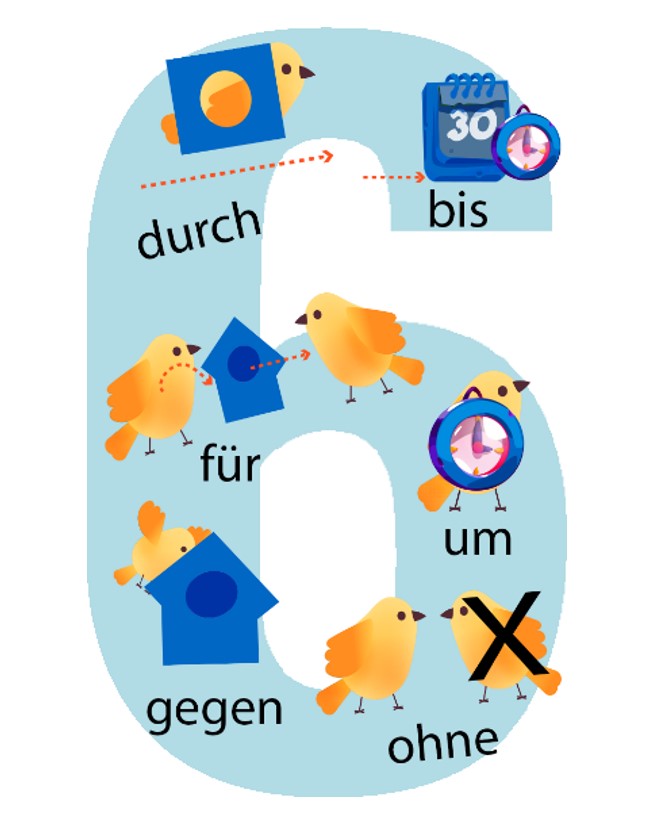
Prepositions with dative case
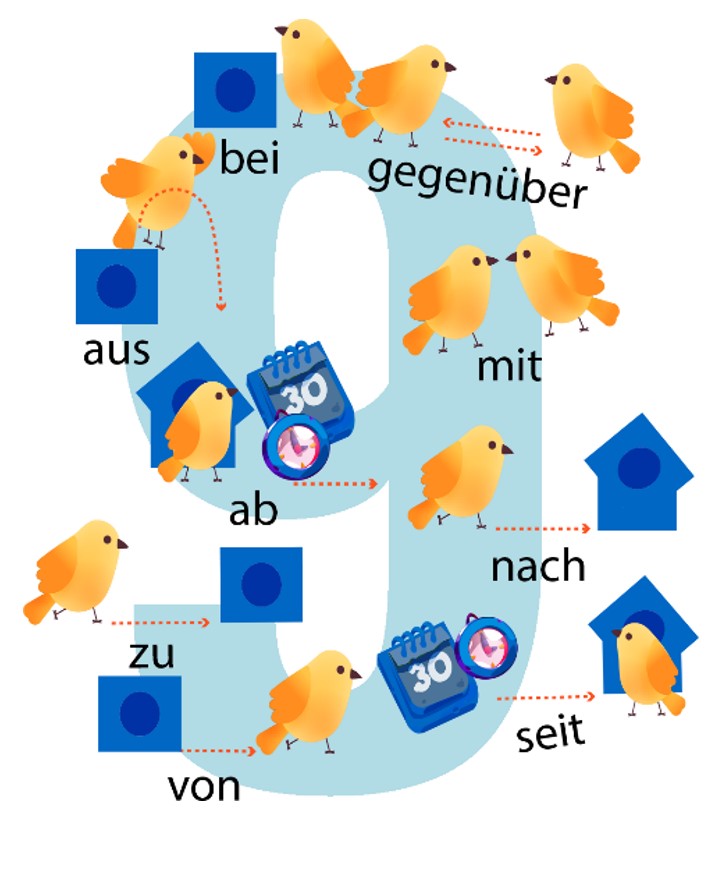
Alternating prepositions
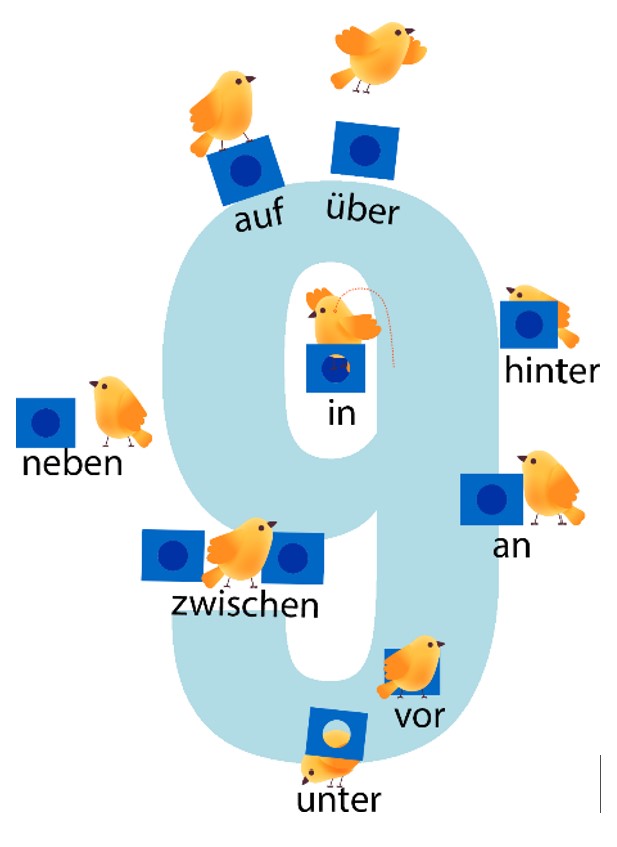
Examples:
| W-Fragen | Antworten |
|---|---|
| Wohin läuft der Vogel? | Er läuft durch die Box. |
| Wo steht der Vogel jetzt? | Er steht auf der Box. |
| Was ist mit dem Vogel passiert? | Er ist gegen das Dach geflogen und ist verletzt. |
| Was sagt der Vogel zu dem Partner? | Er sagt, er fliegt jetzt ohne den Partner weg. |
| Wohin fliegt der Vogel? | Er fliegt nach Hause. |
| Wo versteckt der Vogel? | Er versteckt hinter der Box. |
| Mit wem pausiert der Vogel jetzt? | Er pausiert jetzt mit seinem Kollegen. |
Attention:
1. Alternating prepositions have only one meaning, even if the use is different. They can be used for three purposes: a direction (wohin), a place (wo), time (wann, wie lange).
2. Nouns after prepositions with the dative case follow the rule of the dative case. The same applies to nouns after prepositions with the accusative case. Apart from bis and ohne, the other accusative and dative prepositions have more than one meaning. A list and assignment of meanings for time, place and other is recommended.

